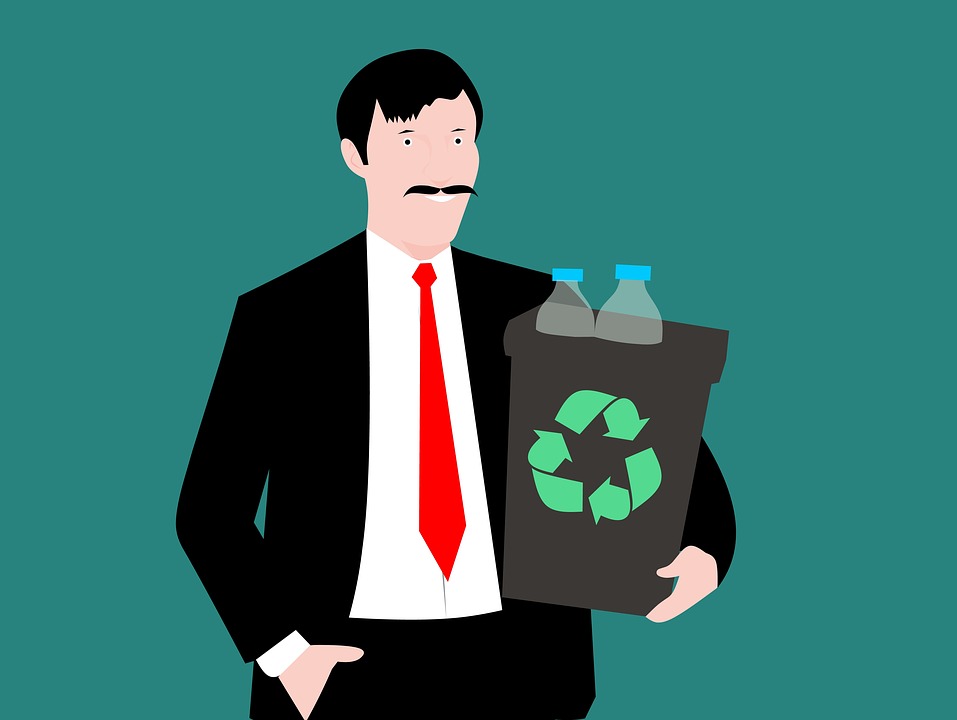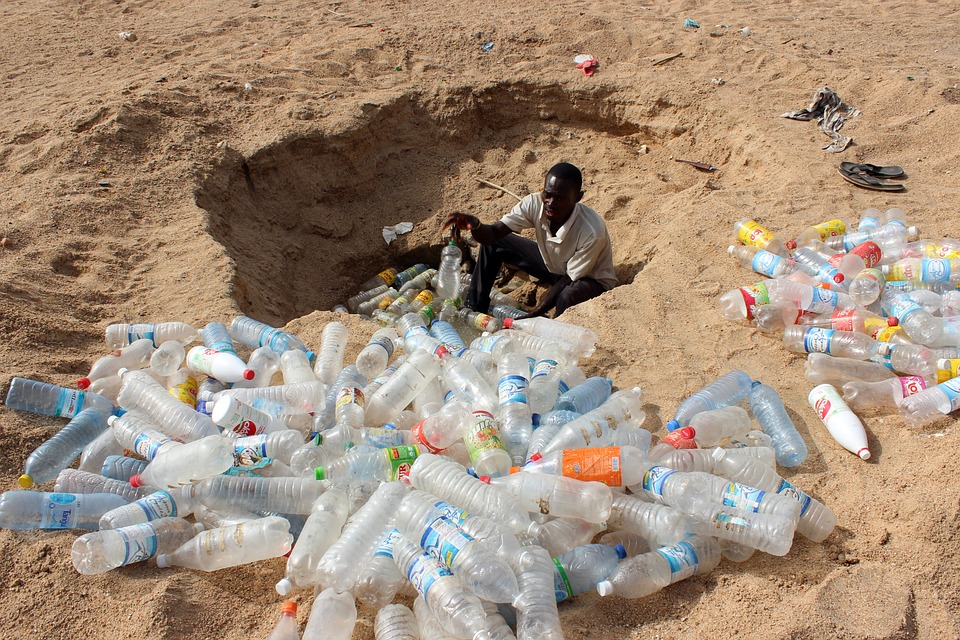Company A spends tens of thousands of dollars to generate it's primary data, while Company B uses publicly available data. Company A meticulously includes every single details of related manufacturing inputs whilst Company B omits insignificant manufacturing related inputs. Company A tracks their products through the end phase and even collects the waste from their product for recycling whilst Company B portrays lackadaisical attitude in their products and donty pay attention to tracking or customer feedback. With these scenarios, which is ideal from not just an environmental perspective but holistically and in a normal thought?
Company "A" I guess...Well that is the concept of Life Cycle Assessment.
The increased consumption of plastics in day to day life has a significant impact on the environment.
Assessing the environmental impacts of individual products or services from production to disposal is one of the most vital strategy towards pursuing eco advantage as a company or a startup and of course, that singular act is pertinent to achieving SDG goal on climate action specifically amongst others.
Life Cycle Assessment is a method of investigating or examing the environmental impact of a device or product over it's lifetime. It examines all the steps of a product from the raw material extraction phase, product production, assembling to distribution as well as repair, maintenance and disposal.
So no wastage is pronounced from LCA procedural strategies of tracking products from production to disposal phases. Recycling is utilized as a proactive measure here to reduce waste
The goal of LCA is to compare the environmental effects assigned to products and services by quantifying all inputs and outputs of material flows and assessing the effects of these flows on the environment.
The term Life Cycle Assessment refers to a holistic assessment of raw material production, manufacture, distribution, use and final disposal not neglecting the transportation phase and recovery phase especially via recycling.
According to the European Environment Agency:
“Life cycle assessment (LCA) involves the evaluation of some aspects – often the environmental aspects – of a product system through all stages of its life cycle. Sometimes also called “life cycle analysis”, “life cycle approach”, “cradle to grave analysis” or “eco-balance”,
Conducting product impact assessment can be tricky but Life Cycle Assessment (LCA) got you covered and encompasses product impact assessment as well.
With an LCA, every possible environmental impact of all outputs and inputs at every stage of a product's life cycle from raw materials extraction to use to end of life are all involved.
In today's sustainable society targeted vision, most organizations don't need to and shouldn't aim for a perfection or a fully fledged LCA studies or plan when issues of concern pertaining to analyzing product impacts is concerned.
What is of utmost importance is getting a fortifiable idea of what product's main impacts are and the necessary tools or elements to steer you to the right path to reducing the effects of the impacts.
Before embarking on a potentially time-consuming and expensive LCA, get clear on the following:
- What question(s) are you trying to answer?
- What problem(s) are you trying to solve?
- What decision(s) do you need help with?
- What’s your company’s goal for the analysis?
Most studies build off an international standard approach for LCAs.
A set of international standards have been painstakingly built over decades to establish a unifying framework on which most LCAs build: ISO 14040 and ISO 14044.
An LCA is only as good as the data and assumptions behind it -- and no LCA is perfect.
During a Life Cycle Assessment, you are required to evaluate the potential environmental impacts throughout the life cycle of a product or service that includes; production phase, distribution and transportation phase as well as tracking the waste from that product from the customer.
Life Cycle Impact Assessment covers in entirety relevant inputs from the environment examples; crude oil, water, land use, etc as well as emissions into land, air, water and soil. The International Organization for Standardization (ISO) provides guidelines and requirements for conducting a Life Cycle Assessment.
Phases of Life Cycle Assessment
Goal and Scope Definition
This phase of LCA defines the product or service to be assessed, with a required level of detail and basis for comparison. It is also imperative to set a goal which determines the scope including applications and audience.Inventory Analysis
A data compilation and an inventory analyses of extractions released into the environment. A list of all inputs and outputs associated with life cycle of product or service are finally shown.Impact Assessment
Classification of resource use and emissions generated according to their potential impacts is done with a categorized impact quantified which showcases the importance of the LCA study.Interpretation
Likened to a research or project work, here discussion of results in teems of contributions, relevance, data quality and limitations encountered is seen with a systematic evaluation of opportunities for reducing the negative effects of the products or services on the environment.
Is a life cycle analysis compulsory?
LCA is a great option for organizations who are striving to improving their environmental performance but not mandatory though. Nonetheless, the number of subscribers and users adopting LCA and customers encouraging their clients or partners to adopt this system is increasing by the day.
Is a life cycle analysis expensive?
A thorough LCA will require a complete and exhaustive gathering of data thus, making it a time consuming and expensive process.
Although, sometimes LCA may not necessarily require collection of huge datasets regularly but rather the technicality in analysi, expertise skills required and software for analysis might be more costly than ordinarily acquiring data.
Analysing an LCA from start to finish might take quite a long time in duration probably say months, or even years. Data notwithstanding, the timeframe alongside resources it could consume along the line might just be a serious bottleneck in successfully carrying out an LCA.
Life Cycle Assessment (LCA) is widely used to select a sustainable alternative in plastic waste recycling and management. LCA on mechanical recycling and energy recovery for instance, showed that recycling of plastic waste produces lower emissions with immense benefits to the environment.
In the United States for instance, more than 137 million tons of Municipal Solid Wastes were landfilled in 2015 out of which 26.01 million tons was plastic waste (US EPA 2019). Pyrolysis thus, has the willpower to decrease landfills use as a management techniques for municipal solid waste and decrease conventional fuel consumption.
According to the figures reported by Plastic Energy, each tonne of end-of-life plastic PSW processed, 850 litres of chemical feedstock (pyrolysis oil)
Transportation stages of Polyethylene terephthalate (PET) and Polystyrene as packaging materials from material extraction to disposal and use for energy production or material replacement by recycling had the major impact on the environment compared to stages that includes production and waste collection.
Plastics solid waste is a major concern globally due to the environmental impact it can pose to soil and water resources in the long run through pollution. Pretreatment and recycling have been beneficially proven to reduce the impact of solid waste especially plastic as our focus here on the environment. Life Cycle Assessment (LCA) is a developed tool for assessing the weight of environmental pollution and analysing the processes on effectively and adequately managing waste with the aim of ensuring a 'Zero waste'.
Plastic Waste management has evidence of posttreatments such as pyrolysis as measures to curtailing environmental effects compared to landfilling. Pyrolysis utilizes increased temperatures above 430 °C (800 °F) under pressure in the absence of Oxygen to chemically decomposed organic materials. It offers the advantage of char production of high calorific value which can be used as fuels either for internal consumption or as a substitute to fossil fuels. Of course a substitute to fossil fuels will definitely help protect and preserve our environmental resources. Who enjoys pollution of all sorts ranging from noise pollution in generating sets to water pollution from colloidal particules or soil pollution from runoffs or see pages.?
The impacts of pyrolysis when compared with incineration, landfilling and anaerobic respiration for Municipal Solid Waste was identified to have the least impact while landfilling has the most impact in the long run.
Pyrolysis is safe and agrees with the environmental guidelines drawn by the ISO 14040 and 14044 standards to promote sustainable environmental solution on waste management.
Pyrolysis is a robust methodology for plastic waste post treatment for waste minimization which relatively minimizes environmental burden.
However, Life Cycle Assessment, LCA is not holistically addressed for the environmental assessment but is considered an integrated tool accounting for the overall process of the life cycle of a product or service.
Too often a life-cycle assessment only looks at end-of-life options, such as recycling and what type of recycling is best, when an evaluation of material selection is also needed.
LCAs are veritable tool in environmental management for companies and organizations to determine the environmental impact of materials produced using fossil fuels as well as other resources such as water.
Apparently, chemically recycled plastics causes significantly lower emissions of carbon than those produced from primary fossil resources.

Photo Credit: Mohamed_HassanPixabay
Life Cycle Assessment (LCA) is widely used to select a sustainable alternative in plastic waste recycling and waste management in entirety. LCA analyses on mechanical recycling and energy recovery processes showed that recycling resulted in lower emissions and provided benefits to the environment. Obviously, these results are only valid if performances of the recycled plastic is equivalent to those of the virgin materials.
Decision making process for LCA analyses proves complex when individual impact categories rather than aggregated impacts and integration of performance of recycled plastics are utilized
REFERENCE
How to undertake a Life Cycle Assessment of your products and services
Life Cycle Analysis and Product
Plastic solid waste in the context of LCA and Sustainable Management


